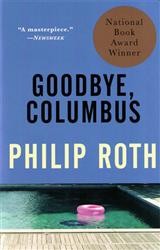Marek Hlasko was the wunderkind of the Polish Spring of 1956 — a young writer (born in 1934), without much formal education who emerged to give voice to the darker side of the post-war Polish experience in the brief thaw following Khrushchev’s denunciation of Stalin. Hailed for his gritty work and just as quickly shunned by the literary apparatchiks, Hlasko, having been sent to Paris in 1957 to boost Poland’s literary reputation abroad, became an exile for the rest of his brief life; he died of a drug overdose in Germany in 1969. Among his other places of sojourn in his exile years, Hlasko spent a year or two in Israel, which he credits with saving his life. Killing the Second Dog (Drugie zabicie psa in Polish; published in 1965) is one of several fictions Hlasko wrote with an Israeli setting. This edition, from a new small press specializing in translations of foreign literature, is a reprint of a 1990 translation. New Vessel Press is to be commended for bringing Hlasko back to the attention of English speaking readers.
Killing the Second Dog is a grim and absurdist tale of two con men who make a living (barely) by swindling middle-aged, rich American women vacationing in Israel. The narrator is a going-to-seed hunk who lures the women on and eventually asks them for money to pay off creditors. His partner, the “brains” behind the operation, is a down-at-heels theater director. The two engage in terse dialogues about the nature of acting and the effects of language, giving the brief story a kind of philosophical heft. The raffish areas of early-1960s Tel Aviv, populated by a grotesque crew of drifters, hunchbacks, drunks, and drug addicts, provide a suitably noir setting.
Like the existential heroes of Sartre and Camus, or the Beat characters of Jack Kerouac’s fiction, Hlasko’s characters drift almost randomly in a meaningless world. Jacob, the narrator, seems incapable of human connection until his feelings for his latest prey almost seem to trip him up. In a moment of self-revelation, he yearns to strip away his mask to reveal a soul tormented by the horrific images of his childhood in war-ravaged Poland. But he pulls back from this moment of connection (and the connection he makes with his victim’s young son — a somewhat unbelievably drawn foul-mouthed child), and brings the sordid plot to its planned shocking conclusion (involving the titular dog).
On its own, Killing the Second Dog may not be in the same league as Camus’s The Stranger, to which it has some superficial parallels. But it speaks to the existential drift of a generation lacerated by the twin horrors of total war and totalitarian domination.
Related content:




